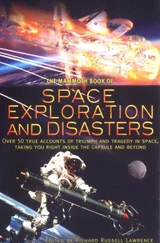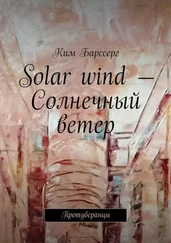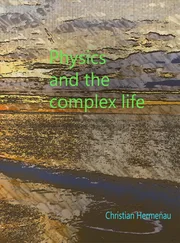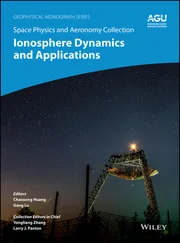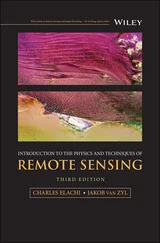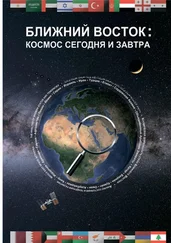Since then, a number of observational studies have shown that magnetic reconnection is indeed frequent in the solar wind. It has in particular been shown that (a) the magnetic reconnection exhausts may contain two oppositely streaming proton beams resulting from the mixing of the two populations from the inflow media (Gosling et al., 2005); (b) it often occurs at the HCS, where spacecraft typically observe counter‐streaming electron populations resulting from the mixing of either strahl or halo electrons (Gosling, 2005; Lavraud et al., 2009), signaling field lines either closed or disconnected from the Sun; (c) it occurs also well inside of 1 AU; (d) reconnection X lines in the solar wind may extend over very large distances and be active for long periods of time (from multiple spacecraft observations), suggesting that the reconnection process is not inherently intermittent (Gosling et al., 2006; Lavraud et al., 2009; Phan et al., 2006); (e) reconnection occurs for a wide range of guide fields and plasma beta properties, but is more frequent for low plasma beta (Eriksson et al., 2009; Gosling & Phan, 2013); and (f) magnetic reconnection may be driven within or at the interfaces of CMEs (Gosling et al., 2005; Ruffenach et al., 2015; Wang et al., 2012), as well as at small flux ropes in the solar wind (Feng et al., 2011; Tian et al., 2010). Many other studies, in particular based on theory and simulations, have been conducted to understand the structure of the exhaust, its boundaries, and its evolution, but these are not summarized here. It is important to note, however, that the occurrence of reconnection at CME boundaries was early perceived as broadly important (McComas et al., 1988). Indeed, its occurrence implies that the magnetic structure of the CME will change over time during propagation, so that the outer magnetic shells of the structure are peeled off, or in other words, the CME is eroded (Dasso et al., 2007; Möstl et al., 2008; Ruffenach et al., 2012; Tian et al., 2010). Direct evidence for this process was studied in detail through both case and statistical studies in Ruffenach et al. (2012, 2015), demonstrating the frequent occurrence of CME erosion during propagation. The process was also studied through global simulations by Manchester et al. (2014) and Manchester, van der Holst, and Lavraud (2014). The importance of CME erosion by magnetic reconnection also comes from its potential effect on CME geoeffectiveness (Lavraud et al., 2014).

Figure 1.13 Highly idealized planar projection of a slightly asymmetric reconnection exhaust, not to scale, convecting with the nearly radial (from the Sun) solar wind flow. The dash‐dot arrow shows an effective spacecraft trajectory through the exhaust. For simplicity, the oppositely directed exhaust is not shown.
( Source : From Gosling & Szabo, 2008. © 2008 John Wiley and Sons.)
Other broader impacts of the frequent occurrence of magnetic reconnection in the solar wind come from the fact that it may affect solar wind heating, in particular near the Sun, as well as the generation of turbulence and associated intermittency, topics that are reviewed in the next sections.
1.4. WAVES AND TURBULENCE
1.4.1. Spectra of Solar Wind Fluctuations at All Scales
In situ measurements allow us to make detailed analysis of electromagnetic fluctuations in the solar wind plasma over a wide range of scales. Figure 1.14(left) shows an example of a composite magnetic spectrum taken at 1 AU using the ACE and Cluster spacecraft (Kiyani et al., 2015). Fluctuations are organized in different frequency ranges, each with a different power law. The main central part (10 −3Hz < f < 10 −1Hz) is characterized by a Kolmogorov −5/3 spectral slope; this corresponds to the inertial range of an MHD turbulent cascade that transports energy from large to small scales, as in hydrodynamics turbulence (Bruno & Carbone, 2013).
It should be recalled here that due to the high speed of the solar wind flow compared to the typical velocities associated to the motion of the plasma fluctuations (Taylor hypothesis), time frequencies measured in the spacecraft frame can be interpreted as spatial k‐vectors in the plasma frame. It is then possible to study the 3D distribution of k‐vectors in the inertial range using measurements at different angles with respect to the main field (Horbury et al., 2008; Saur & Bieber, 1999; Wicks et al., 2010); this suggests a quasi‐2D distribution of the power, constituted by very elongated turbulent eddies along the magnetic field and a turbulent cascade that occurs preferentially for k‐vectors perpendicular with respect to the magnetic field.
At larger scales, the spectrum of magnetic fluctuations is often characterized by a shallower slope, close to −1 (Bavassano, Dobrowolny, Mariani et al., 1982; Denskat & Neubauer, 1982); this range, called 1/f, is sometimes considered as the energy reservoir for the turbulent cascade, in analogy with hydrodynamics, although this analogy is not necessarily straightforward (Tu & Marsch, 1995) and more generally, the origin of the 1/f range is still under debate in the community (Chandran, 2018; Matteini et al., 2018; Matthaeus & Goldstein, 1986; Velli et al., 1989; Verdini et al., 2012).
At higher frequencies, around scales corresponding to the typical ion characteristic lengths (ion gyroradius ρ iand inertial length d i), the spectrum becomes steeper. This is expected when MHD breaks down, and kinetic physics starts to play a role. Moreover, fluctuations become more compressible at these scales, as a result of the transition from a regime where the electric field is controlled by ideal‐MHD to a Hall‐MHD regime (e.g., Alexandrova et al., 2008; Kiyani et al., 2013; Lacombe et al., 2017). As a consequence, the spectrum of the electric field, which follows that of the magnetic field at large MHD fluid scales, starts to depart at ion scales and display a shallower spectral slope at sub‐ion scale, such that the ratio of electric‐to‐magnetic fluctuations increases linearly with f (Matteini et al., 2017).
At even higher frequencies, approaching electron plasma scales (f: 50–100Hz, corresponding to a few km at 1 AU), the magnetic spectrum of the background turbulence steepens further; see Figure 1.14(right). We will discuss the background turbulence at electron scales in more detail below. Note that at these frequencies whistler wave activity is also sometimes observed, characterized by right‐handed circular polarization very distinct from that of the background turbulence (Kajdič et al., 2016a; Lacombe et al., 2014; O. W. Roberts et al., 2017; Stansby et al., 2016)
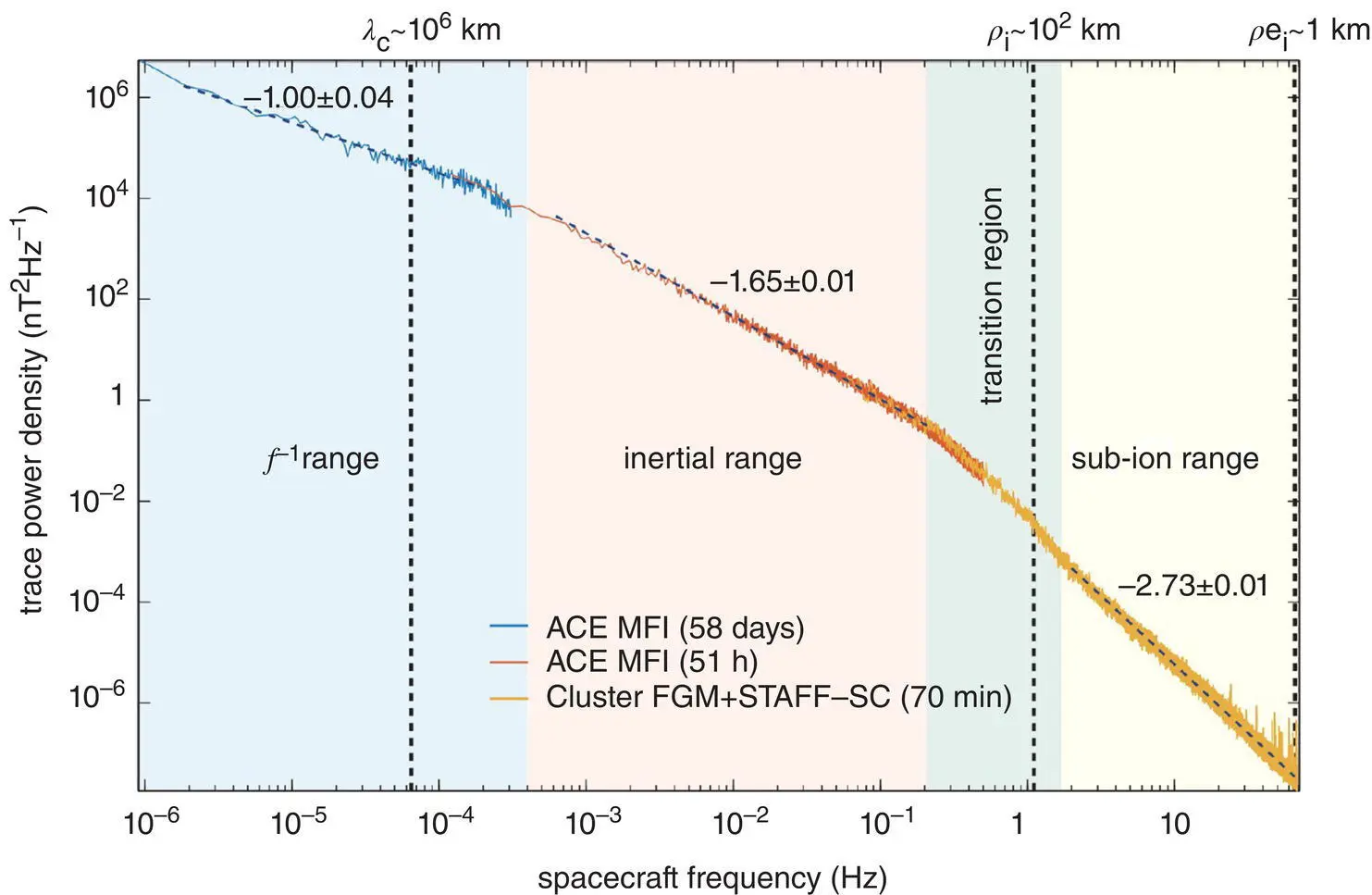

Figure 1.14 Top: Typical spectrum of magnetic field fluctuations in the solar wind from Kiyani et al. (2015). Measurements of ACE and Cluster at 1 AU from MHD to electron scales are shown. Doppler‐shifted characteristic scales, such as the correlation length λ cand the ion and electron Larmor radii ρ i, eare indicated by vertical dashed lines. Bottom: Superposed (more then 100) turbulent spectra of magnetic fluctuations under different plasma conditions from inertial to sub‐electron scales as measured by Cluster (Alexandrova et al., 2012).
Читать дальше




